| Home |
| Rarities Committee |
| IL400 Club |
| Checklist |
| Monthly Summaries |
| Birding Reports |
| Rarity Alerts |
| Historical Records |
| Articles |
| Gallery |
| Video Clips |
| Contact Us |
Yoav Perlman
Even though day-time temperatures at Ne'ot Hakikar soar over 40C almost daily, and birds are few and quiet during the hot hours, nightwatching and birding during the cool evening and early morning hours provide some excellent birding and opportunities to see other animals too.
I am doing a field research on Nubian Nightjars for almost two years at Ne'ot Hakikar, and found June to be one of the most interesting months there. The nightjars are easy to see at this time of the year, with some families present. I see Desert Eagle Owls almost every night: they're very vocal now, and come to hunt in the open fields.
Some other exciting breeding species can be seen regularly: Sooty Falcons can be seen in the evening, coming down to the valley from the mighty cliffs of the Rift valley to hunt for Pallid Swifts. The flocks of swifts are huge, containing thousands of birds, coming to drink at the few ponds in the evening. Small groups of Blue-cheeked Bee-eaters that breed in the area in small numbers often join the swifts at the drinking sites. Little Bitterns breed in the reedy fishponds, and the loud song of Clamorous Reed Warblers and Dead Sea Sparrows can be heard.
The dry saltmarsh scrub, home of the nightjars, holds large numbers of breeding Eastern Olivaceous warblers, Rufous Bush Robins, and Dead Sea Sparrows. In the agricultural fields, exceptional numbers of Namaqua Doves are seen: on an average evening drive one may count up to 30 birds! The males are seen at this time of the year chasing each other in their unique display flight. This is the highest concentration of namaquas I've ever seen in Israel.
On the banks of the former Dead Sea saltpans, and of the Zin reservoir, that filled up exceptionally late this year as a result of floods in late April and May, fresh young Black-winged Stilts and Kentish Plover chicks can be seen, wading in the mud and shallow water. Small numbers of Little Ringed Plovers also breed here.
Other wildlife seen around are some regular mammals, including Brown hare, Golden Jackal and Striped Hyena, and the rarer Caracal. During my trapping attempts for nightjars, I trapped a few species of bats, including a mega record: I trapped an Eastern Barbastelle (Barbastella leucomelas) in March, which was the 3rd record for Isreal! Other commoner bats I caught were Hemprich's Long-eared Bat (Otonycteris hemrichi) and Grey Long-eared Bat (Plecotus austriacus).
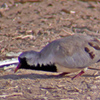  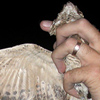 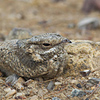
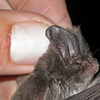 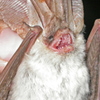 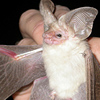
|
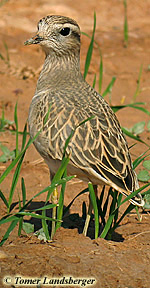 Dotterel (Charadrius morinellus) Yotvata, Dec.05 |
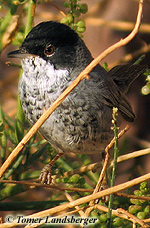 Cyprus Warbler (Sylvia melanothorax) Wadi Shlomo, Feb.05 |
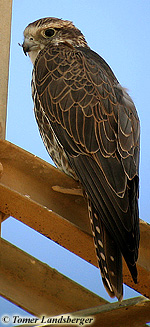 Saker (Falco cherrung)Western Negev, Nov.05 |
Back to top